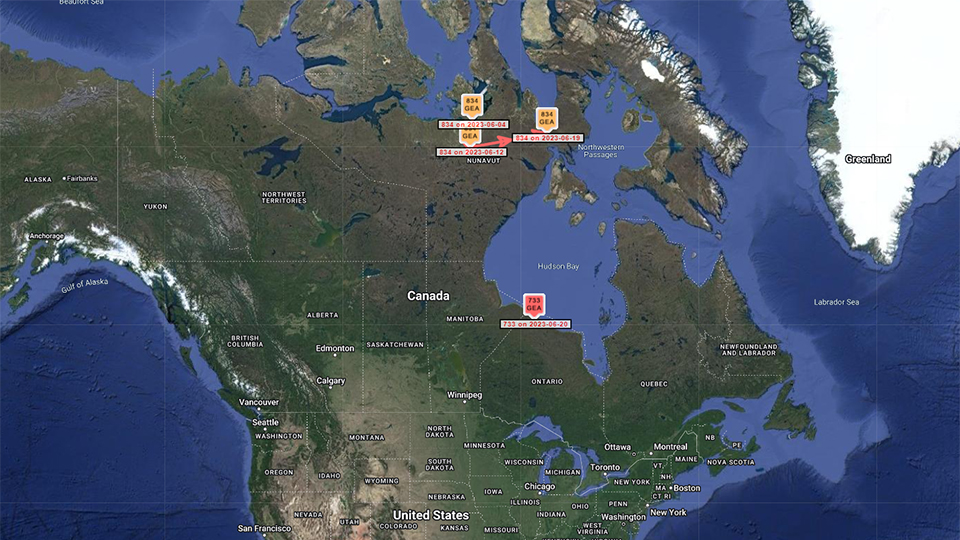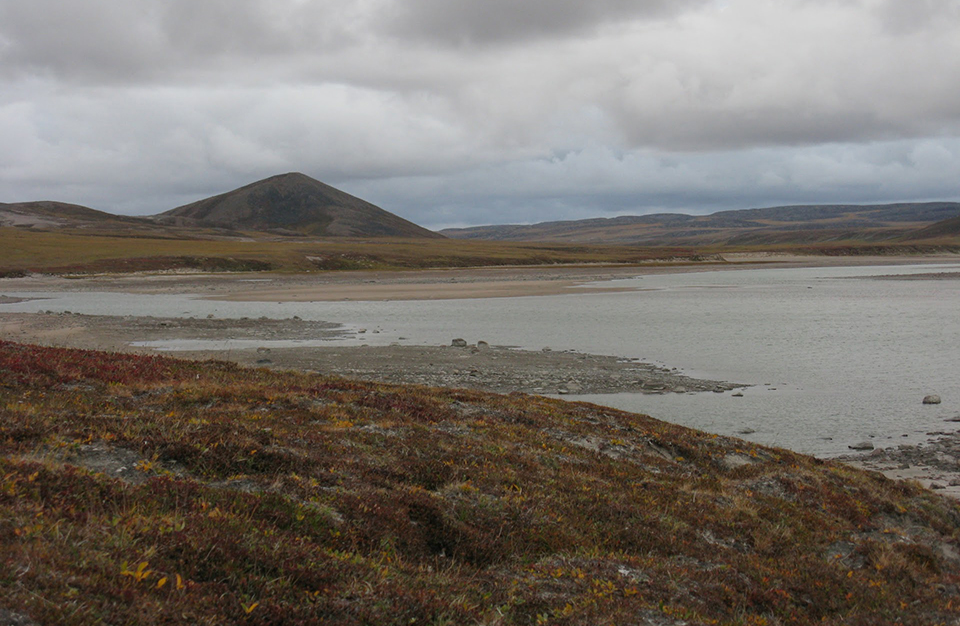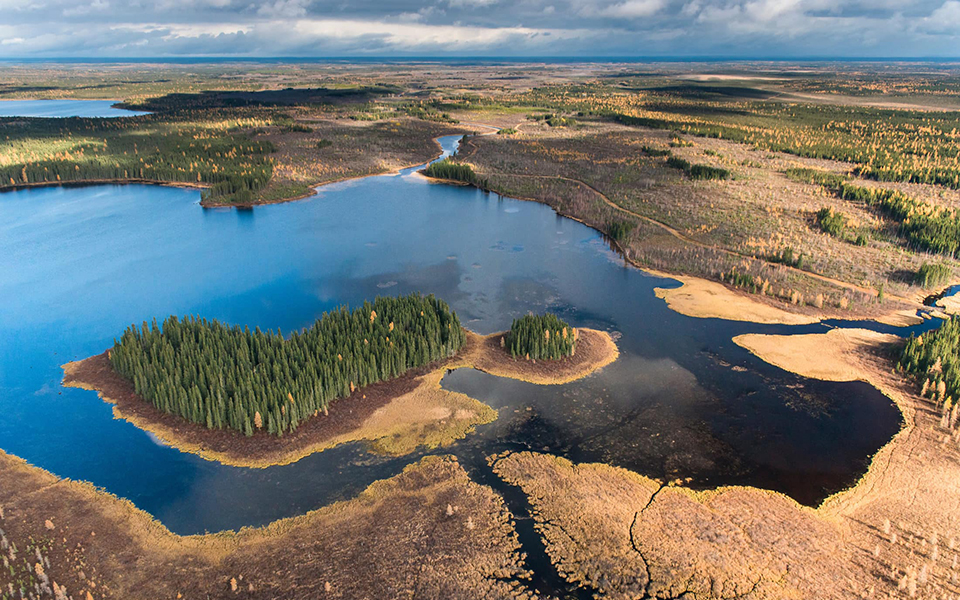
June 22, 2023: 834 and 733
Where are Golden Eagles 733 and 834? The Raptor Resource Project is researching wintering Golden Eagles in the Driftless Area to learn more about their movement on their winter and summer ranges, including potential nest locations, seasonal migration patterns and timing, and route fidelity.
The sun reached 23.5 degrees north – its northernmost location – on the solstice yesterday. It was still 1,366 miles south of Decorah, which enjoyed 15.24 hours of daylight and 8.76 hours of night, including civil twilight, nautical twilight, astronomical twilight, and true night. While DH2 didn’t get a whole lot of shuteye – no sleeping masks or blackout curtains for bald eagles! – our little eaglet still got some. But Golden Eagles 733 and 834 are much further north!
Golden Eagle 834
Subadult male 834 is currently wandering around NE Nunavut on the 67th parallel, which is closer to the North Pole than to his wintering area in the Driftless. This time of year, the sun is shining 24 hours a day, with no civil twilight, no nautical twilight, no astronomical twilight, and no true night. 834 won’t experience twilight until July 13 or true night until September 11. While arctic terns experience the most daylight of any species on earth (17 hours a day across their entire lives on average), Golden Eagles soak up the sun on their summering grounds! If I wanted to create a folk legend, I’d attribute their beautiful golden napes to the unsetting arctic summer sun.

What 834 might see
What might 834 see? He’s up on the arctic tundra, which is cold, dry and largely treeless (although short, hardy conifers can survive the harsh conditions). From the air, he might glimpse Inuit people (https://www.inuitcircumpolar.com/), other golden eagles, narwhal, bowhead whales, seals, caribou, polar bears, and millions or billions of summering birds, including peregrine falcons, arctic terns, snow buntings, and some birds we see passing through on the Flyway: ruddy turnstones, Ross’s geese, white-fronted geese, northern pintails, Canada geese, and many more: https://ebird.org/barchart?byr=1900&eyr=2023&bmo=1&emo=12&r=CA-NU-KT. I like to picture him perched on a basalt promontory, overlooking endless blue sky and cold, blue water wrinkled with waves and the trails of whales and seals. The sky dims a little at night, but only enough for the brightest planets to shine and twinkle in the sky. Night or day, the cries of birds familiar and strange fill the air. The arctic summer is bright but short, and everyone is busy in this season of abundance!
Golden Eagle 733

Welcome to the Hudson’s Bay Plains! Photo by Garth Lenz: https://thenarwhal.ca/ring-of-fire-ontario-peatlands-carbon-climate/
How about 733? She’s in northwestern Ontario, about 800 miles south of 834, but about 819 miles north of her wintering grounds. She isn’t experiencing true night, but the sun is rolling just below the horizon for about 6.23 hours per day, so she’s getting some twilight. She’s summering in the Hudson’s Bay Ecoregion – a flat, waterlogged landscape that provides an ideal summer home for millions of migratory birds, including many of the ducks, plovers, sandpipers, geese, and swans we see migrating through the Mississippi Flyway.
Based on everything we know, all of our golden eagles appear to be doing well. A thousand thanks to Brett and Ryan of Eagle Valley for helping us learn about and imagine the world of the birds we are tracking. To explore the travels of all of the birds we’ve tracked, visit our interactive maps at https://www.raptorresource.org/learning-tools/eagle-map/. To learn more about our golden eagle project and golden eagles in general, follow this link: https://www.raptorresource.org/learning-tools/golden-eagles/.
 The Raptor Resource Project
The Raptor Resource Project The Raptor Resource Project
The Raptor Resource Project